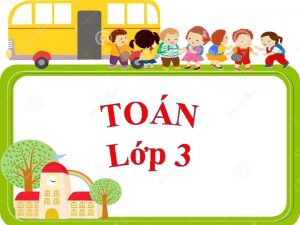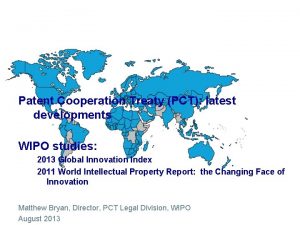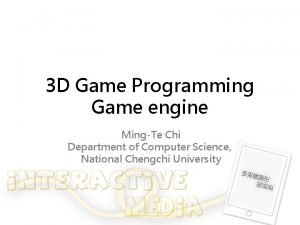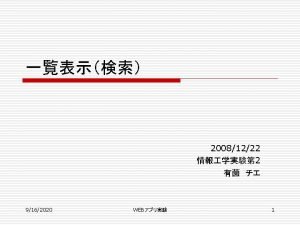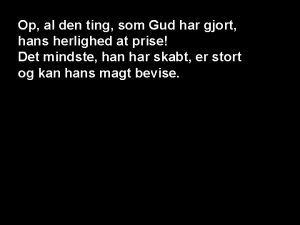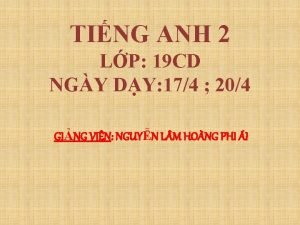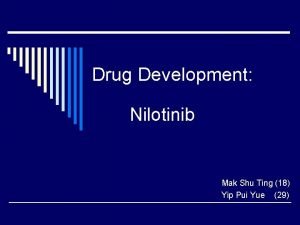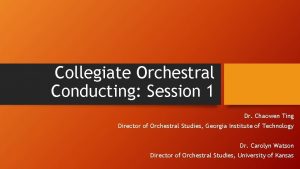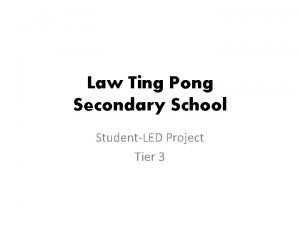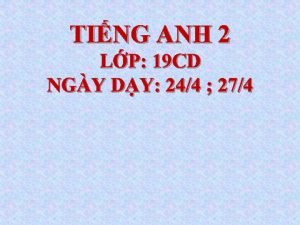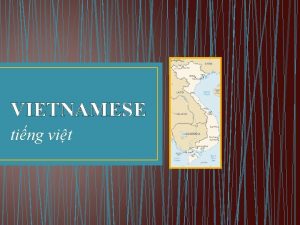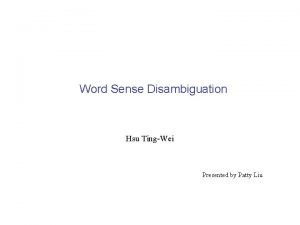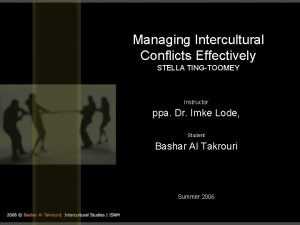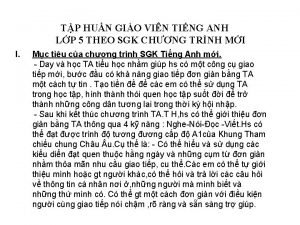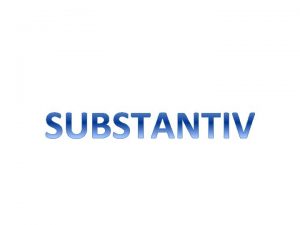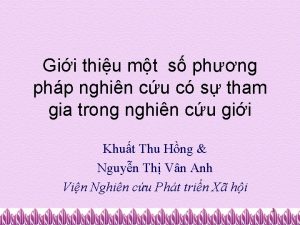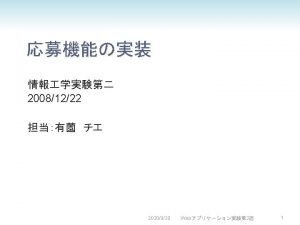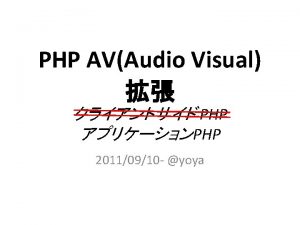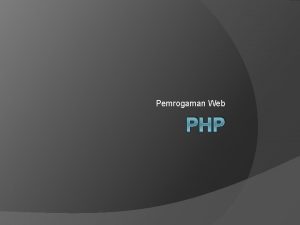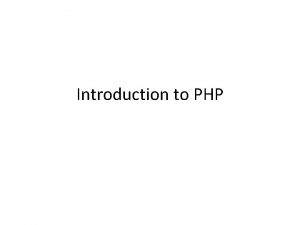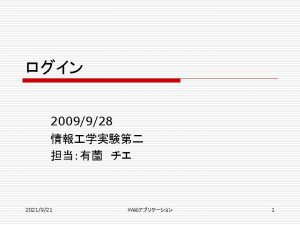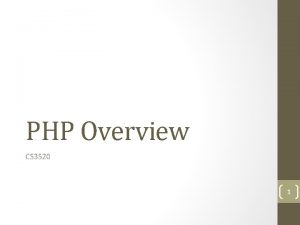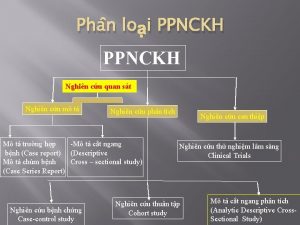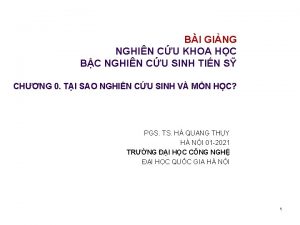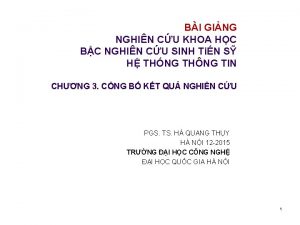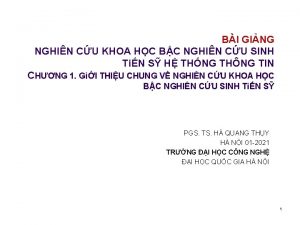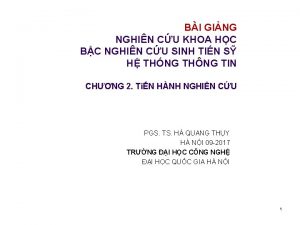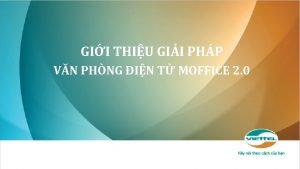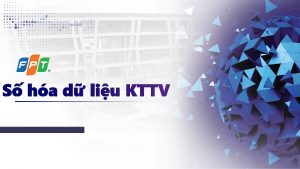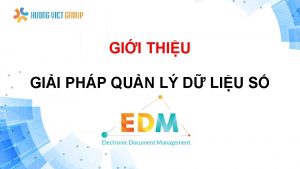Nghin cu cc gii php t hc ting






















- Slides: 22

Nghiên cứu các giải pháp tự học tiếng Anh sinh kế cho đồng bào dân tộc phục vụ sự phát triển du lịch cộng đồng Vũ Thị Thanh Nhã Khoa Tiếng Anh, 5 -2019

Nội dung trình bày • Nghiên cứu • Kết quả ban đầu • Các hướng nghiên cứu tương lai

Nghiên cứu • Thời gian: 2017 -2019 • Địa điểm: Sapa, Lào Cai • Sản phẩm cần đạt: - Bài báo ISI/Scopus: 01 - Hỗ trợ NCS: 02 - Bài báo trong nước: 01

Kết quả ban đầu • Tổng quan lí thuyết • Công cụ thu thập số liệu • Draft bài báo

THE EVOVING PEDAGOGY OF INTEGRATING CONTENT AND LANGUAGE

Christmas around the world

Christmas around the world

Christmas around the world

Method changes • Cyclical pattern of method change in ELT A new method “breaking from the old and at the same time taking with it some of the positive aspects of the previous paradigm” (Brown, 2007, p. 13) • Theory travel phenomenon (Mahboob & Tilakaratna, 2012)

EMI and ELT methods Immersion 1960 s ESP 1940 s CLIL 1994 Bilingualism in 17 th century CBLT 1960 s EMI 1088/1999 Source of world map: http: //www. wallpaperfunda. com/worldmap/

Bilingualism • • • Content: Subject knowledge in the curriculum L 1: Mother tongue of immigrant children L 2: English Purpose: Substraction (language for content) Method: Withdrawal classes

Bilingualism contribution • • Educational Models Cognitive development of bilingual children Transferability Description of language for learning content: – BISC: basic interpersonal communicative skills – CALP: cognitive academic language proficiency

Content-based Instruction • Content: Curriculum content, themes of interest to students, or vocational and occupational areas (Crandall & Kaufman, 2002; Grabe & Stoller, 1997) • Purpose: Dual development (language and content) • Method: Integrated

Contribution • Mohan’s (1986): The importance and effectiveness of teaching languages through content. • Language and content should be acquired at the same time in contextual settings (Cummins, 2008 a; Grabe & Stoller, 1997) • Pedagogical content knowledge (van Driel & Berry, 2010) and meaningful interactions • Language strategies, cooperative learning, scaffolding

Immersion movement (St Lambert, 1965) • Content: Cultural understanding, curriculum content • L 1: English, L 2: French • Purpose: Additional • Method: Immersion • Contribution: Schools are language-rich and meaningful environments to nurture language development

Content and language integrated learning (CLIL)-1994 • • Content: Curriculum subject L 1: any European language, L 2: mostly English Purpose: Additional (Multilingual, pluralism) Method: Immersion (integrated)

CLIL Contribution • A language policy • A pedagogy to teach a foreign language (Bruton, 2013)

English as a medium of instruction • Content: Disciplinary knowledge, curriculum content • L 1: Any language, L 2: English • Purpose: Content (language is a bi-product) • Contribution: Educational, political, economical

English for specific purposes • Content: Carrier content of disciplinary knowledge • L 1: any language L 2: English • Purpose: English for academic and work purposes after World War II (Starfield, 2013)

Contribution • Disciplinary language + Vocabulary + Structures + Generic and transferable skills (GEAP) + Communicative situations • Understanding of learners of various age groups, experience, backgrounds • Need analysis

Language and content relationships Bilingualism CBI CLIL ESP Immersion program EMI Goal Content and language Language, culture Content Assumptio n Content is instructed in mother tongue and transferred to L 2 to support students with weak language skills Meaningful contents encourage language learning Relevant contents to work and study encourage language learning Exposure to target language environmen t promotes language learning Learning meaningful contents leads to English ‘pick -up’ Original context Western countries EP countries European EP countries Canada Asian context

• Today’s trend lies in the creativity of individual teachers because “no quick and easy method is guaranteed to provide success” (Brown, 2007, p. 14). • Well-considered dosage pedagogy (Dalton. Puffer, 2007)
 Mẹ mua cho lan một chiếc cặp sách giá 15000
Mẹ mua cho lan một chiếc cặp sách giá 15000 Gii rankings
Gii rankings Stimulus diffusion
Stimulus diffusion Gii game engine
Gii game engine Web.facebook.com.php
Web.facebook.com.php Php php://input
Php php://input Op al den ting som gud har gjort
Op al den ting som gud har gjort Qing qing ting lyrics
Qing qing ting lyrics Ting anh
Ting anh Thing ting
Thing ting Also all by shu ting
Also all by shu ting Chaowen ting
Chaowen ting Law ting pong
Law ting pong Op al den ting som gud har gjort
Op al den ting som gud har gjort Ting anh
Ting anh Language vietnamese
Language vietnamese Shu ting
Shu ting Ting wei ya meaning
Ting wei ya meaning Stella ting toomey
Stella ting toomey Fei protocal
Fei protocal Vin ting
Vin ting Genitiv
Genitiv Ting task
Ting task
